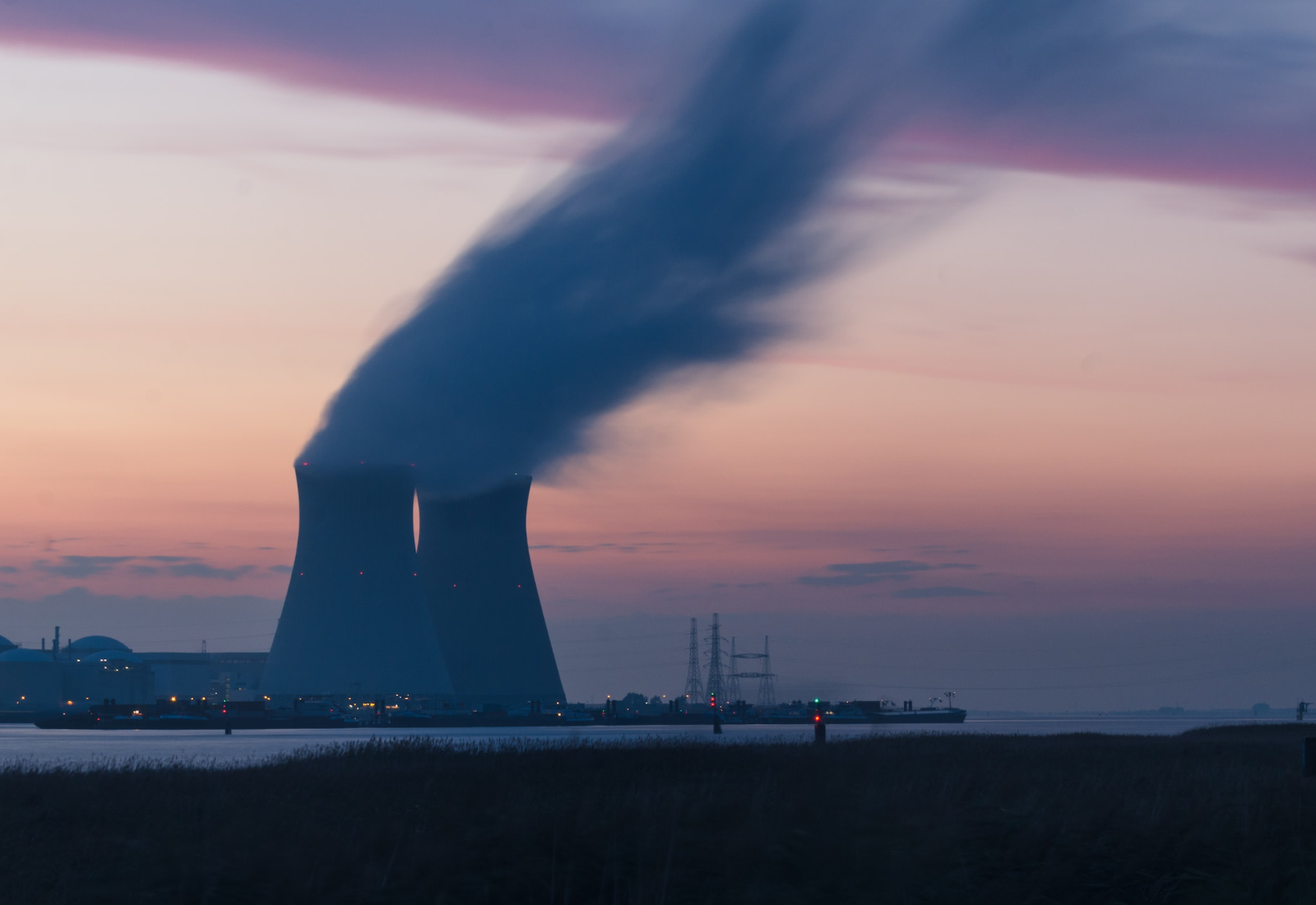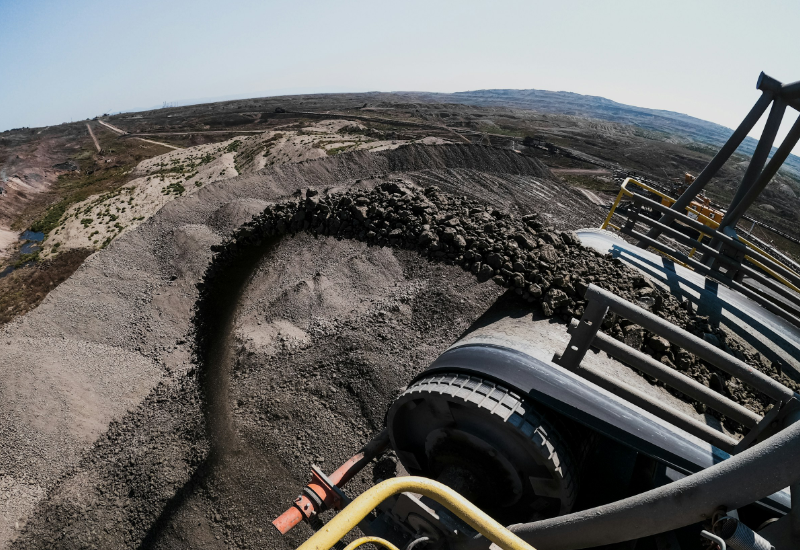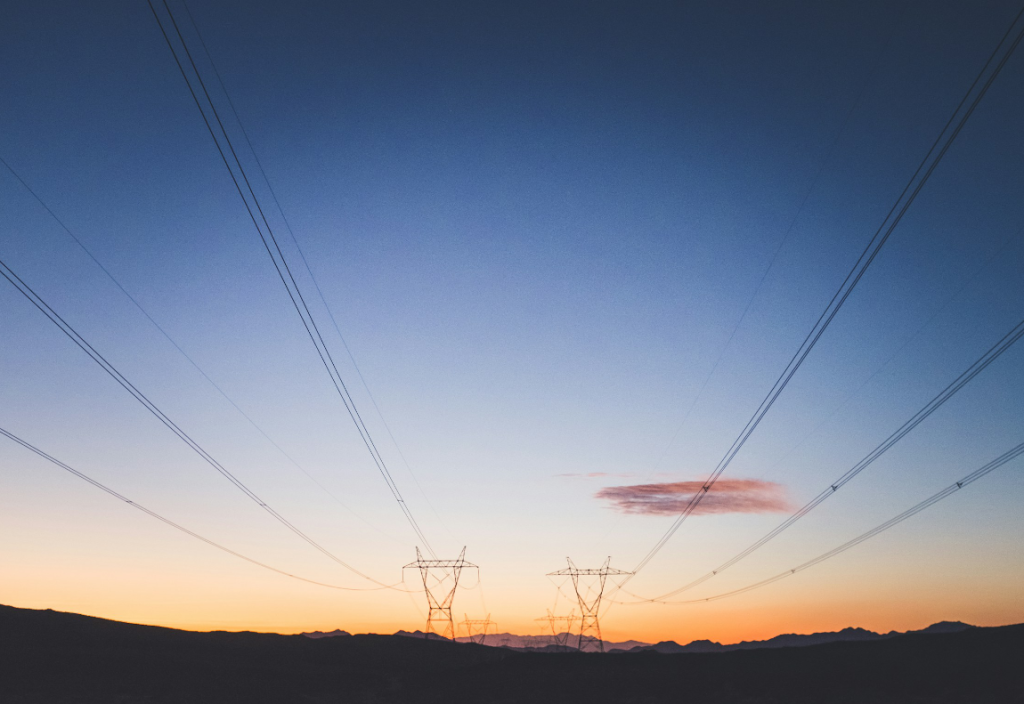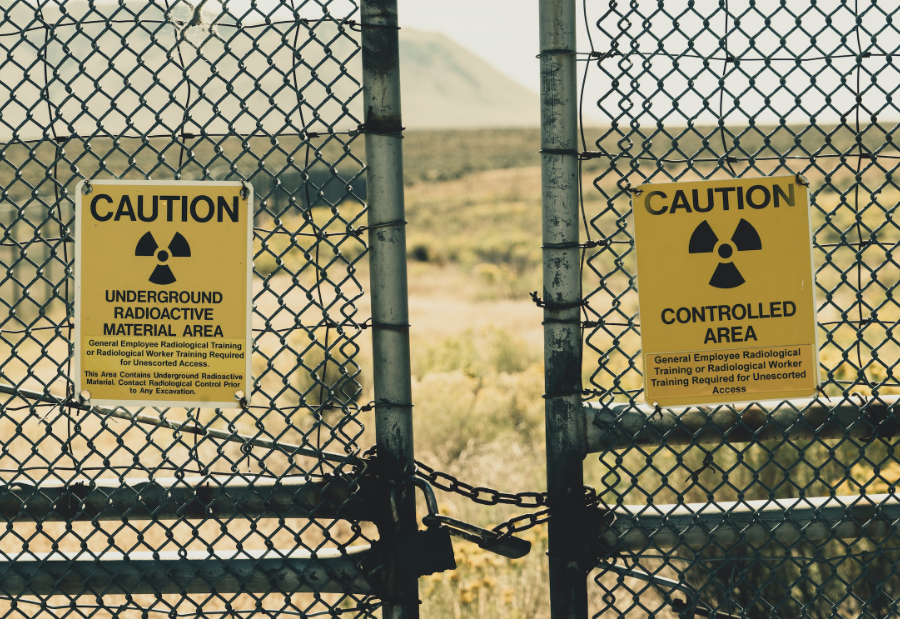Throughout the 20th century, reliable and low-cost coal-fired electricity, plentiful oil for transport, and natural gas for heating and chemical production all powered the West’s industrial growth and agricultural productivity.
Unfortunately, the carbon dioxide and other greenhouse gases released during combustion and industrial processing of these fossil fuels has gradually warmed the atmosphere. Greenhouse gas emissions continue to increase – with a new record high in 2022 – causing unprecedented and unpredictable climatic extremes. So it is imperative that countries work collectively to do all they can to achieve global zero carbon.
Each country could focus on activities that maximize the reduction of global emissions. For example, Brazil should focus on protecting its forests. Perhaps Australia could take a leadership role in zero-carbon nuclear technology.
In 2006, the Howard government commissioned engineer and physicist Dr Ziggy Switkowski to investigate. He found that Australia had the capacity and capability to quickly build a zero-carbon nuclear energy grid and play a significant international role building on its rich mineral endowment. With one-third of global uranium reserves, Australia has far more uranium than any other country.
Unfortunately, the Howard government prohibited nuclear energy in 1998 following a political ‘horse trade’ deal with the Greens and the Democrats. We now experience the tragic consequences. Self-serving politicians manipulate Australia’s electricity grid, resulting in daily dramas, high energy prices, increasing hardship for residential and business customers, frequent closures of heavy industries and paralysing uncertainty for investors.
Unsurprisingly, recent polling by Compass Research shows steadily increasing support for nuclear-powered electricity. About 70 per cent of Australians want nuclear energy to be explored as an “option for meeting our energy security and emission targets”.
The only rational response would be to change our nuclear energy policies and remove the prohibitions against the use of uranium so that we could get on with the urgent job of generating zero-carbon electricity.
Arguments commonly used to justify the prohibitions include impact on First Nations peoples, global obligations, concerns about waste and safety, timeliness, sustainability, and costs. In a video on Twitter on 13 May, federal environment minister Chris Bowen cited the issues of costs, time and waste in making a case against nuclear energy.
The manufacture of wind and solar farms and associated batteries and transmission lines will require unprecedented quantities of minerals to be mined and metals to be recovered. According to GTK in Finland, the quantity of minerals needed to provide global renewables-based zero-carbon energy is greater than the known reserves. It is also many times greater than those required for nuclear power stations with the same energy generation capacity.
Similarly, wind and solar farms require vast tracts of land about 1000 times greater than that needed for an equivalent capacity nuclear power station. Even now, at the very start of implementation of the Australian Energy Market Operator’s (AEMO) zero-carbon energy system, the planned installation of wind farms in Queensland’s Atherton Tablelands will destroy many tens of thousands of hectares of First Nations’ land and sensitive ecosystems.
In contrast, the majority of Australia’s uranium reserves are located at a single underground operational mine and mineral processing facility in South Australia. The Olympic Dam facility could ramp up its underground facilities to increase production of uranium with little increase in its existing surface footprint, resulting in negligible encroachment onto First Nations’ land.
If co-located at existing operating coal-power stations, the land area required for nuclear power stations would be effectively zero. Also, the existing coal power transmission lines, substations, cooling systems and other infrastructure could be reused. Existing engineers, tradesmen and operators could be employed; local businesses, communities and families could be supported.
Much of the world’s uranium is presently supplied by Russia. Blessed with the largest known uranium resources, Australia could replace Russia as a dominant nuclear fuel supplier. Former head of the International Crisis Group, Gareth Evans, has advocated for Australia to act in a tangible and significant manner to reduce nuclear proliferation. By taking a lead role in the supply and management of a closed-loop nuclear fuel, Australia could replace Russian-sourced fuel and achieve this objective.
Given our well-educated workforce and good governance, Australia would be well positioned, in cooperation with the International Atomic Energy Agency and kindred spirits in other countries, to create a trusted closed-loop nuclear supply chain and reduce global proliferation risks.
With our heavy industry capabilities, dominant mineral resources, and technology help from friends, Australia would also have a considerable competitive advantage in manufacturing nuclear systems and deploying them as the world’s low-cost clean and safe energy supplier.
By working closely with responsible countries to implement zero-carbon nuclear and lobby vigorously for alignment of net-zero schedules, Australia could also avoid the world being held hostage by emissions laggards such as Russia and China.
In contrast, by pressing ahead with importing wind and solar, and creating a vacuum of leadership within the global nuclear energy industry, Australia may be responsible for creating an existential crisis, with the growing nuclear fuel supply chain continuing to be dominated by irresponsible and untrustworthy autocrats intent on facilitating nuclear proliferation and aggression.
In regard to waste, many substances involved in the manufacture of wind and solar technologies have a high toxicity that never diminishes. They have an infinite half-life much longer than used nuclear fuel. These metals and minerals are not subjected to the same level of scrutiny of nuclear fuel. Hence, they are not always managed in a highly controlled manner, resulting in significant environmental and human health impacts greater than those of nuclear power stations.
Consider, for example, the widely reported adverse impacts caused by mining-related arsenic contamination of groundwater, acid mine drainage, highly caustic red mud lakes at historical alumina refineries in Europe, and airborne exposure to heavy metals.
In contrast, the toxic properties of radioactive substances such as uranium decrease over time, eventually reducing to background radiation levels. Because of the high level of scrutiny and control applied to nuclear materials, the exposure experienced by the environment and humans is virtually nil – as are their effects.
Only a small percentage of the nuclear fuel’s energy content is depleted after being used once in a nuclear power station. Hence, spent nuclear fuel can be reprocessed and reused many times over. It is not a waste. It is a carefully managed resource that diminishes in toxicity over time.
Where used fuel is required to be stored for longer periods, it is commonly placed in protective concrete containers known as dry casks. In Australia, it would make sense for these casks to be placed in a secure enclosure at Maralinga, given it is a controlled space due to the UK’s historical bomb-testing program.
The small quantity of used fuel that is no longer suitable for reprocessing can, via the Australian-developed Synroc process, be further reduced and vitrified so that it remains chemically inert and be placed deep underground in the same mine that it came from.
Consistent with the careful management of used nuclear fuel, in the history of the global nuclear industry there have been no significant radiological consequences associated with storage of spent nuclear fuel, despite the anti-nuclear movement’s unfounded fears.
The anti-nuclear movement, led by Dr Helen Caldicott, heavily promoted the idea that nuclear is unsafe. In 2011, the ‘evidence’ used by Dr Caldicott was found by George Monbiot to be ungrounded in science and unsupportable.
In 2014, the United Nations Scientific Committee on the Effects of Atomic Radiation found that no deaths had been attributed to radiation-related illnesses following the Fukushima tsunami. Similarly no deaths had been attributed to the Three Mile Island incident in 1979.
The only significant nuclear release that has ever occurred was at a nuclear power plant designed and operated by Russians in Chernobyl in 1986. This accident had unique root causes, none of which are likely to be repeated.
The World Health Organization in 2005 concluded that the Chernobyl accident was expected to result in about 4000 excess deaths – 50 of which occurred shortly after the event – and in others having shortened lives.
If we were to make a comparison between the impact of the nuclear industry’s 70-year history and that of equivalent wind and solar technologies, China’s safety statistics regarding industrial workers would be relevant.
With our heavy industry capabilities, dominant mineral resources, and technology help from friends, Australia would also have a considerable competitive advantage in manufacturing nuclear systems and deploying them as the world’s low-cost clean and safe energy supplier.
We could assume that China would remain the dominant supplier of low-cost renewables – such as batteries, intermittent PV solar and wind turbines. Currently, it is home to eight of the top 10 PV solar manufacturers and 10 of the top 15 wind turbine companies. While the true death toll associated with workers – and the slave labour in Xinjiang, where these industries are known to be located – is not officially reported, some estimate up to 20,000 miners die each year in accidents. A further five million people die due to exposure to airborne fine particulate, lung infection or work-related disease.
If we were to take the figure of five million excess deaths a year and assume that 1 per cent of these deaths were attributable to mining, mineral processing, fabrication, assembly and coal-energy production for global wind and solar production, then a total of 3.5 million excess deaths could be attributed to wind and solar over a 70-year period.
To calculate the excess deaths from nuclear, there has only been one Chernobyl in 70 years of the nuclear industry. If we were to make a worst-case assumption and assume another Chernobyl happened every 70 years, then on this basis the intermittent renewables industry would be responsible for about 1000 people killed for every one person killed by the nuclear industry.
Intermittent renewables could also be deadly to Australians in an even more concerning way. By committing ourselves to a renewable energy net-zero plan, the vast majority of intermittent renewables would be purchased from China. This would create a long-term dependency that would transfer trillions of dollars from Australians to an aggressive and autocratic country.
Other western countries such as Germany are finding intermittent renewables-based electricity to be more expensive and difficult to implement than expected, resulting in increased electricity prices and supply uncertainty.
In Australia’s experience, the largest cost overruns and longest delays are associated with the ‘firming’ of intermittent renewables with hydroelectric dams, which are very contentious and often are not approved, as evident from the continued cost blow-outs and delays with Snowy 2.0.
A further concern with the present plans to adopt renewable energy is technology risk. No country has created a net-zero power grid using renewable energy. If Australia were to become the first to achieve this, it would take on many risks associated with first-of-a-kind (FOAK) technologies.
The anti-nuclear movement frequently provides a ‘throwaway line’ about nuclear power stations taking a long time to build. However, delays and cost overruns occur only in a small minority of projects, and even then only in a few countries.
A study has shown that projects delayed and costing more are located in the United States, France, Finland and the United Kingdom. By studying countries with successful nuclear construction methods – Japan, United Arab Emirates and Korea in particular – and adopting those methods, we can avoid these delays and costs.
The land area and associated environmental impacts of intermittent supply renewables PV solar and wind farms are typically over a thousand times greater than a nuclear power station with the same energy generation capacity.
Unlike PV solar panels, for which turbine blades and batteries need replacement about every 20 years, nuclear power stations have a lifetime of at least 60 years. Recycling of solar panels and turbine blades is not yet viable, with the process consuming more energy than saved when considering transport and processing.
AEMO’s Integrated System Plan (ISP) requires many thousands of new transmission lines for rewiring Australia, built across many thousands of kilometres of land. Before being constructed, each of AEMO’s planned wind farms, solar farms, transmission lines, pumped hydro dam, and battery will each have to be approved and accorded the normal environmental assessment and community approval processes.
These approvals are proving to be difficult. Nobody wants a transmission line on or near their property. Underground transmission lines are wickedly expensive and not practicable. We have to find another way. Nuclear energy is worthy of consideration.
Some proponents of intermittent renewables suggest that one way to accelerate deployment would be to compromise our environmental standards. How ironic if deployment of intermittent renewables required us to destroy the environment to save the planet!
In contrast, nuclear power stations can be co-located at existing coal stations and reuse the existing transmission lines and other assets when the nuclear station is ready for operation, avoiding the need for, and associated destruction of, rewiring Australia.
The anti-nuclear movement frequently provides a ‘throwaway line’ about nuclear power stations taking a long time to build. However, delays and cost overruns occur only in a small minority of projects, and even then only in a few countries.
Continued use of our existing transmission systems also provides an efficient transition to fusion – the next generation of energy technology. A change from coal to renewables and then fusion would require rewiring not just once but twice.
The total 60-year capital costs estimates to achieve net zero 2050, based on computer simulations by AEMO’s ISP (2022), is $1,200 billion, and likely to be much greater as evidenced by the Snowy 2.0 overruns. Delivering the same firm energy generation with 100 percent nuclear, determined from actual construction costs of comparable facilities, is only $600 billion.
An independent consortium of the University of Melbourne, Queensland University and Princeton engineers and academics will shortly complete a privately funded project with the objective to create more detailed Net Zero Australia (NZAu) 2050 plans and more accurate costs using intermittent renewables and covering transport fuel, industrial process, forestry and agriculture.
Electricity generation has been found to be the source of only about a quarter of the total human-sourced greenhouse gases. The balance comes from transport fuel, industrial processes, forestry management and agriculture. The preliminary NZAu 2050 plans suggest that transformation of almost every part of society is required to address all of these sources of greenhouse gases, with solar panel farms larger than the size of Tasmania, massive hydro dams and wind farms.
Similar to AEMO’s plans, this costly process would need to be repeated about every 20 years, when the batteries, solar panels and wind turbines reach end of life. NZAu estimated the nominal capital costs to achieve and maintain this scale of change at $100-150 billion annually for the foreseeable future. At an average of $125 billion per year over the 60-year life of a nuclear facility, the NZAu 2050 plans will be $7.5 trillion.
Even if we relied on future yet-unknown innovation, this plan is unlikely to succeed. In the process, higher-cost and less-reliable energy will profoundly damage heavy industry and employment, and is likely to dramatically increase energy prices.
We risk driving even more of our industry offshore by further increasing already high-priced electricity. New industries will choose to be based in other countries. In Germany, large industries are leaving because of the country’s high-priced intermittent renewables-based electricity system – presently about twice as expensive as nuclear-based energy in France – and its carbon emissions are increasing as it switches from nuclear to coal energy.
Compared to renewables, nuclear energy generation is more practical. It uses fewer materials, requires less land, is more reliable, offers a lower total cost, and can reuse existing transmission lines. It does not require massive costly energy storage systems or associated highly contested approvals. And it does not require relocation of communities and labour.
Given the overwhelming benefits of nuclear power, it is unsurprising that many other countries already rely on nuclear power stations and have policies to increase uranium and nuclear energy use.
Nuclear power stations are now operating safely in delivering low-cost energy to consumers in many countries – and have done so for over 50 years. And these nuclear capacities are increasing rapidly.
The US alone operates almost 100 nuclear power stations in a highly competitive energy market. Together they provide about 20 per cent of the country’s energy needs and deliver this energy at some of the lowest prices in the world. Twelve US states are powered by more than 30 per cent nuclear energy.
Other countries with more than 30 per cent nuclear power include France (72 per cent), Slovakia (55 per cent), Ukraine (53 per cent), Hungary (51 per cent), Sweden (40 per cent), Belgium (39 per cent), Switzerland (38 per cent), Slovenia (36 per cent), Bulgaria (35 per cent), and Finland (32 per cent).
Nuclear energy provides the lowest-cost energy system, with estimates placing intermittent renewables-based electricity generation at between two and 15 times more costly. It is the only energy technology known to be capable of providing plentiful, continuous, zero-carbon energy needed to power heavy industry, communities, and meet the military needs and provide a zero-carbon economy.
Nuclear energy has the potential to grow heavy industry, bringing with it high-quality and well-paid employment. Yet, we will never know if we don’t urgently remove the prohibitions and give our engineering ingenuity a chance.
Given the existential risks of climate change, and the FOAK risks associated with renewables, it makes no sense to take a chance that renewables might work.
Nuclear energy is not popular with a minority of people – the result of decades of misinformation and exaggeration by the discredited anti-nuclear movement and supported by self-serving political interests and sensationalist media.
It doesn’t have to be this way. Other countries with similar levels of disinformation now have very different attitudes. The Greens Party in Finland, for example, is a strong supporter of nuclear energy.
At rallies in Finland, signs display ‘Go nuclear’. We need to encourage our leaders to ‘go Finland’ and learn from nuclear leaders in other countries to better inform Australians and broaden the existing level of support across the sensible centre.
Instead, we experience political game playing, wishful thinking and flawed policies. Given the extremely serious nature of the global warming crisis, this failure is likely to lead to unimaginable destruction, death and suffering.
While some of my comments differ from information many Australians read, I would ask you to consider the words attributed to Winston Churchill: “When the facts change, I change my mind. What do you do?”
If you wish to republish this original article, please attribute to Rationale. Click here to find out more about republishing under Creative Commons.
Photo by Frédéric Paulussen on Unsplash.








A good example of a PR job by the nuclear industry. Devoid of facts. Many misleading assertions. We DONT want or need it. If a country with our land,wind and solar can’t do renewables then nobody can. Bullshit we cant
Dear Rud. Clearly you have very strong opinions. If you would care to take the time to identify the specific words in my article that you disagree with and explain the reasoning behind your concerns, I will do my best to respond in a rational way to the best of my ability. Yours sincerely, Dave
Concerns about nuclear energy;
1. Before 1986, Chernobyl was claimed to be safe as were other nuclear power plants that have suffered accidents. Accidents are unpredictable. Even if the same accident is unlikely to recur, can anyone predict and prevent the accidents of the future? Not to mention tsunamis, fires, floods, earthquakes, wars and terror attacks.
2. Can anyone guarantee that nuclear fuel will never be used for purposes other than energy production?
3. As a biased writer, activist and promoter of nuclear energy, and not a nuclear scientist, should George Monbiot be held up as an authority?
4. Fossil fuel use is damaging the planet. Nuclear accidents and misuse is likely to damage the planet. Renewable energy is not damaging the planet. The choice seems obvious.
5. Can we reasonably use economic arguments against ours and the planet’s safety from potentially catastrophic consequences?
6. The enormous and totally unpredictable danger of nuclear energy seems to persist as the elephant in the room.
Tony Krins